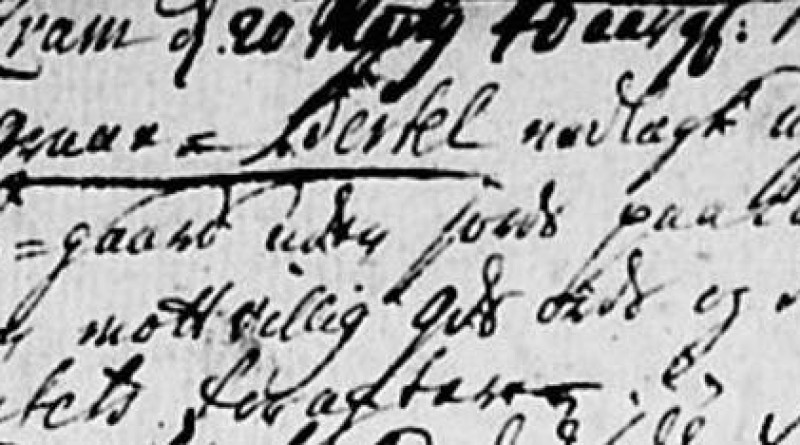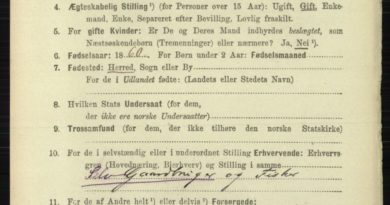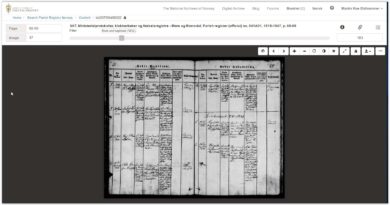A visit from the bishop
I was recently asked to help interpret a church record.
This question appeared in the Facebook group Norwegian-American Genealogy Help Here. The record in question was from Strinda parish in Sør-Trøndelag county. It showed the girl Nikoline Birgithe Grinsdatter leaving the parish bound for America.
Here is the actual record:
SAT, Ministerialprotokoller, klokkerbøker og fødselsregistre – Sør-Trøndelag, 606/L0294: Parish register (official) no. 606A09, 1878-1886, p. 445
Quick link: https://www.digitalarkivet.no/kb20070420640326
The record gave the usual information; Nikoline’s year of birth and a statement that the minister had given her papers showing her baptism and confirmation dates.
So far, so good, but the record also seemed to include a note signed by A. Grimelund. (You can hover the mouse over the picture to zoom in)

While I have some experience in reading the old handwritten records, I readily admit that I wasn’t able to pick this right off the paper.
Another person in the group mentioned that Andreas Grimelund was the bishop of Nidaros, the diocese Strinda parish belong to. This made me think of the Norwegian concept of “Bispevisitas”. This is visits the bishop is required to take in the parishes of his diocese to check the conditions.
The regular visits by the bishop were put in place by King Christian 5’s Norwegian law from 1687. During these visits, the bishop was to inspect the condition in the congregation. He was to examine the youth to see if their education was adequate. In addition, the bishop was required to inspect the minister’s execution of his office. In connection with this, he was to check that the church records were properly kept.
With this in mind, I went back to the record. Here I found the same note in all the sections of the church book. This is the reason that I like to have the link to the actual source when I am asked for help. (See Link to the actual source).
Looking at the note I decided that it had to say “Seet ved Visitatsen i 1883 den 31 August. A Grimelund”. This translates to “Viewed at the Bishop visitation……..”

While Grimelund probably was a good bishop, his handwriting was not the best. I was at first thrown off by the first letter thinking this was the letter J.

With the background information in mind, I decided that it had to be the letter S
In this case, we see that the note had nothing to do with Nikoline.
What we can take away from this is the fact that there sometimes are notes or scribblings in the records that don’t necessarily have something to do with the person we look for. After the church book revision in 1812, the bishop most commonly used to record his visitations and sign on blank pages at the end of the book. We can see an example of this from Norddal parish in Møre og Romsdal, where several visitations are recorded:
SAT, Ministerialprotokoller, klokkerbøker og fødselsregistre – Møre og Romsdal, 517/L0221: Parish register (official) no. 517A01, 1827-1858
Quick link: https://www.digitalarkivet.no/kb20070323680568
Source:
BISPEVISTAS Forslag til nytt visitasreglement for Den norske kirke Utredning fra et utvalg oppnevnt av Bispemøte. Hamar 1985





